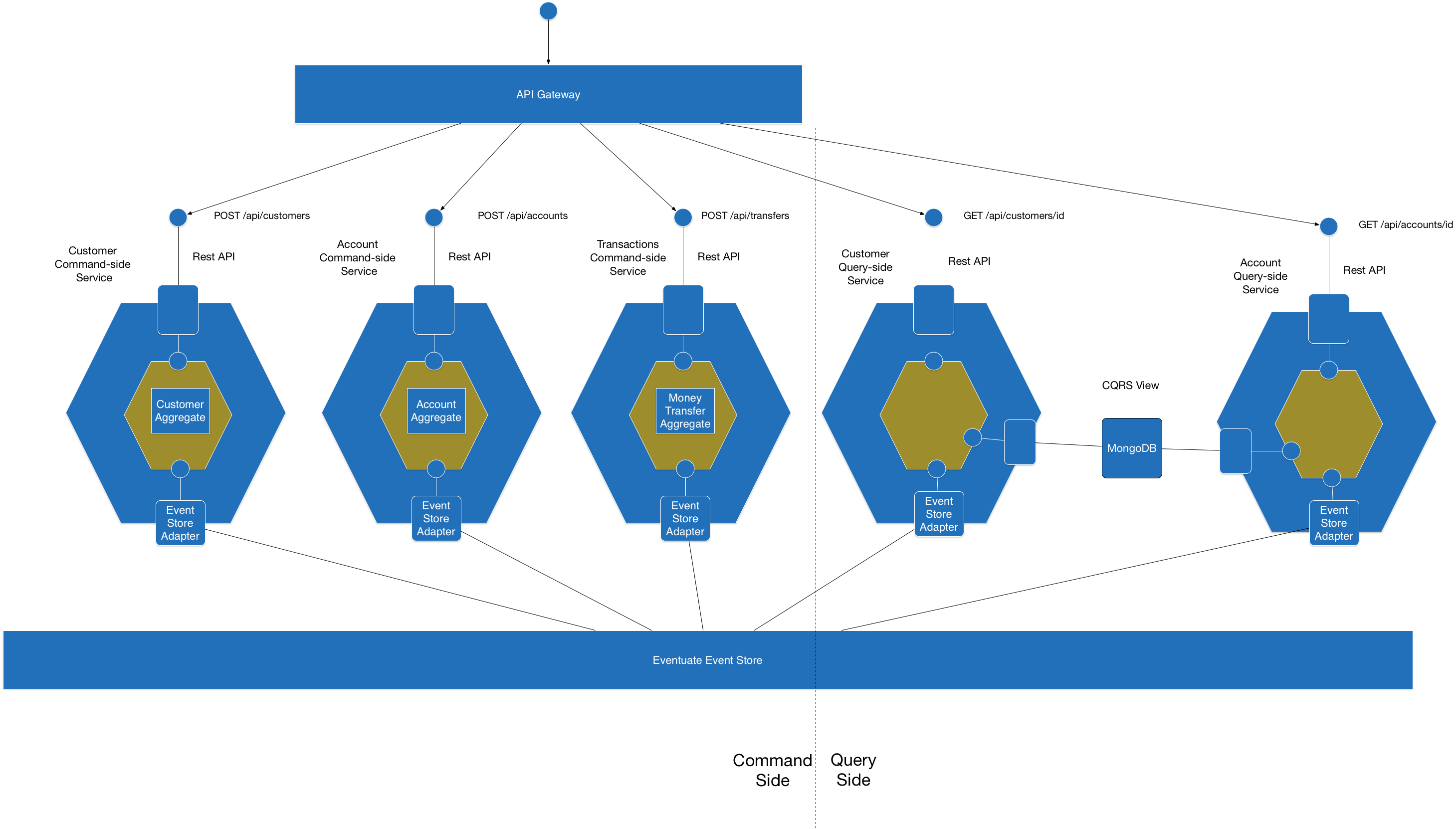This example application is the money transfer application described in my talk Building and deploying microservices with event sourcing, CQRS and Docker. This talk describes a way of architecting highly scalable and available applications that is based on microservices, polyglot persistence, event sourcing (ES) and command query responsibility segregation (CQRS). Applications consist of loosely coupled components that communicate using events. These components can be deployed either as separate services or packaged as a monolithic application for simplified development and testing.
Read the overview or look at the other example applications.
This example illustrates several important concepts:
-
How to decompose an application into microservices - as described below the application consists of several services. For example, bank accounts are managed by one service, money transfers by another service.
-
Using an event-driven architecture to achieve data consistency - rather than using traditional distributed transaction to maintain database consistency this application uses an eventually consistent, event-driven approach.
-
Using event sourcing to implement the event-driven architecture - the domain logic consists of Domain-Driven Design (DDD) aggregates that using event sourcing.
-
Using Command Query Responsibility Segregation (CQRS) - update requests (HTTP POSTs and PUTs) and view requests (HTTP GETs) are handled by separate services.
-
How event sourcing enables deployment flexibility - the application can either be deployed as a monolith or as microservices.
This example application provides a REST API for creating and viewing bank accounts and transferring money between them.
The following diagram shows the architecture:
There are the following services:
- Customers Service - REST API for creating customers
- Accounts Service - REST API for creating accounts
- Transactions Service - REST API for transferring money
- Customers View Service - subscribes to events and updates a MongoDB View, and provides an API for retrieving customers
- Accounts View Service - subscribes to events and updates a MongoDB View, and provides an API for retrieving accounts
There is also an API gateway service that acts as a Facade in front of the services.
There is currently a Java and Spring Boot example: java-spring
For more information, please see the wiki
The application is built using Eventuate, which is an application platform for writing transactional microservices. It provides a simple yet powerful event-driven programming model that is based on event sourcing and Command Query Responsibility Segregation (CQRS). Eventuate solves the distributed data management problems inherent in a microservice architecture. It consists of a scalable, distributed event store and client libraries for various languages and frameworks including Java, Scala, and the Spring framework.
- Eventuate Local - an open-source event store that is built using MySQL and Kafka
There is also an embedded test event store, which is great for integration tests.
This is a Gradle project. However, you do not need to install Gradle since it will be downloaded automatically. You just need to have Java 8 installed.
The details of how to build and run the services depend slightly on whether you are using Eventuate SaaS or Eventuate Local.
First, build the application
cd java-spring
./gradlew assemble
Next, launch the services using Docker Compose:
./gradlew mysqlbinlogComposeUp
Finally, you can open the home page, which is served up by the API Gateway: http://localhost:8080
The individual services are Swagger "enabled".
Open the url http://localhost:<SERVICE-PORT>/swagger-ui/index.html

